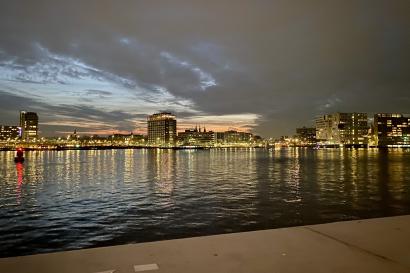Monday | September 4th 2017 | Chiyoda - Shibuya - Harajuku
Immersion. As you scour the numerous study abroad opportunities through the web, immersion is one of the most common buzzwords used to describe the study abroad experience. Despite seeing the word so often, I never took the time to truly understand what it means to immerse in a new environment. Coming from a small, liberal arts college in sunny California, I’ve been spoiled with LA living. Everything is within walking distance, and of course, it’s all in English. However, before I go on a total American tangent, I have to cut myself off because even the framing of this blog post is reflective of one of my flaws as an American studying abroad. I’m always comparing Japan with California in unrealistic, unequal, and fundamentally unnecessary ways. If I’m constantly comparing my experiences in Japan with home, I’m not immersing. But, after two weeks in Japan, I’m learning to understand what immersion actually entails.
Immersion means having access to all the delicious foods of a certain country or region. You can finally check out that hot spot on your bucket list, try out signature regional dishes, and explore historical landmarks. That said, immersion also means living with the aspects of Japan that are different from home, which in turn can seem inconvenient. In particular, most college students, especially those who live on-campus, have about a ten-minute commute from their dorm room to, basically, anywhere. Therefore, upon arriving to Japan, the sudden adjustment to an hour-long commute (one way…) is a difficult transition, even though this is super common for nearly everyone. For example, Lee-san (Student Affairs Coordinator) shared that her commute to work is 90 minutes each way; that’s 15 hours a week!
And although the process of immersion isn’t easy or necessarily comfortable, having access to Tokyo outweighs most inconveniences. For future IES Abroad Tokyo students, I first have to clarify that the IES Abroad Tokyo Center and Kanda University are both located in Makuhari, Chiba Prefecture, which is essentially a suburb of Tokyo. While I am appreciative of its wide roads and its peacefulness, it lacks the distinctive, indefinable energy of Tokyo. It’s easy to become complacent in Chiba, and about a week in, I was starting to feel that way — orientation, food, home, repeat. Luckily for me, a few other IES students were going to Tokyo and were nice enough to invite me to tag along. Long story short, the experience was transformative. Besides being my first time in Tokyo, it felt like my first time truly immersing in Japan. Our little group wandered around Tokyo, bouncing from train to train before landing on a local gyoza shop for dinner. We then strolled around Harajuku, in awe of the eclectic fashion. We even did some embarrassingly touristy stuff, like going to a hedgehog café* and getting an egg salad sandwich from Lawson’s (chain konbini/convenience store) per Anthony Bourdain’s recommendation (it was surprisingly delicious). Needless to say, I was bitten by the Tokyo bug.
If I had to come up with some reasons to justify why the energy of Tokyo is so addictive, I would pin it down to three main factors. Firstly, the cleanliness of Tokyo is a stark contrast to other urban spaces that tend to deteriorate as a result of overcrowding. The overall feeling of safety nicely complements the cleanliness, making it a joy to go adventuring in Tokyo**. Finally, the huge variety of ‘Tokyo’ keeps you coming back for more. Tokyo itself is huge (relatively speaking) and contains many smaller neighborhoods. Thus far, I’ve been to Chiyoda, Shibuya, Omotesando, Odaiba, Asakusa, Harajuku, and Daikanyama. And according to this article, I still have 40 more neighborhoods to explore! Changing my attitude towards study abroad and immersion has made a huge difference on my happiness while abroad. I’m now way more motivated to explore and excited to make the most out of my semester here in Japan.
*The café phenomenon in Japan is a divisive one. For one, it’s selectively advertised for tourists, and many locals are unaware and uninterested in their existence. In addition, many cafés can be criticized for female fetishization and animal cruelty. While I did go to a hedgehog cafe, I did not enjoy my time there, and had a sense of uneasiness the entire time. In the future, I will not be going to any other cafés out of personal choice, and I urge others to do research on the ethics of specific cafés if you do consider contributing to that particular industry.
**My perspective on safety is directly informed by me presenting and identifying as male. While I can’t speak for the experiences of women, trans people, and those who exist beyond the gender binary, my super general advice is to travel in groups when possible, and stick up for one another.

Allen Chen
Hailing from Southern California, I traveled the (not so) great distance of seven miles to attend Occidental College in Los Angeles. At Oxy, my coursework in American Studies and Sociology allows me to explore American history, literature, and culture. While abroad, I aim to broaden my understanding of the American experience, improve my Japanese, and grow as an individual.






